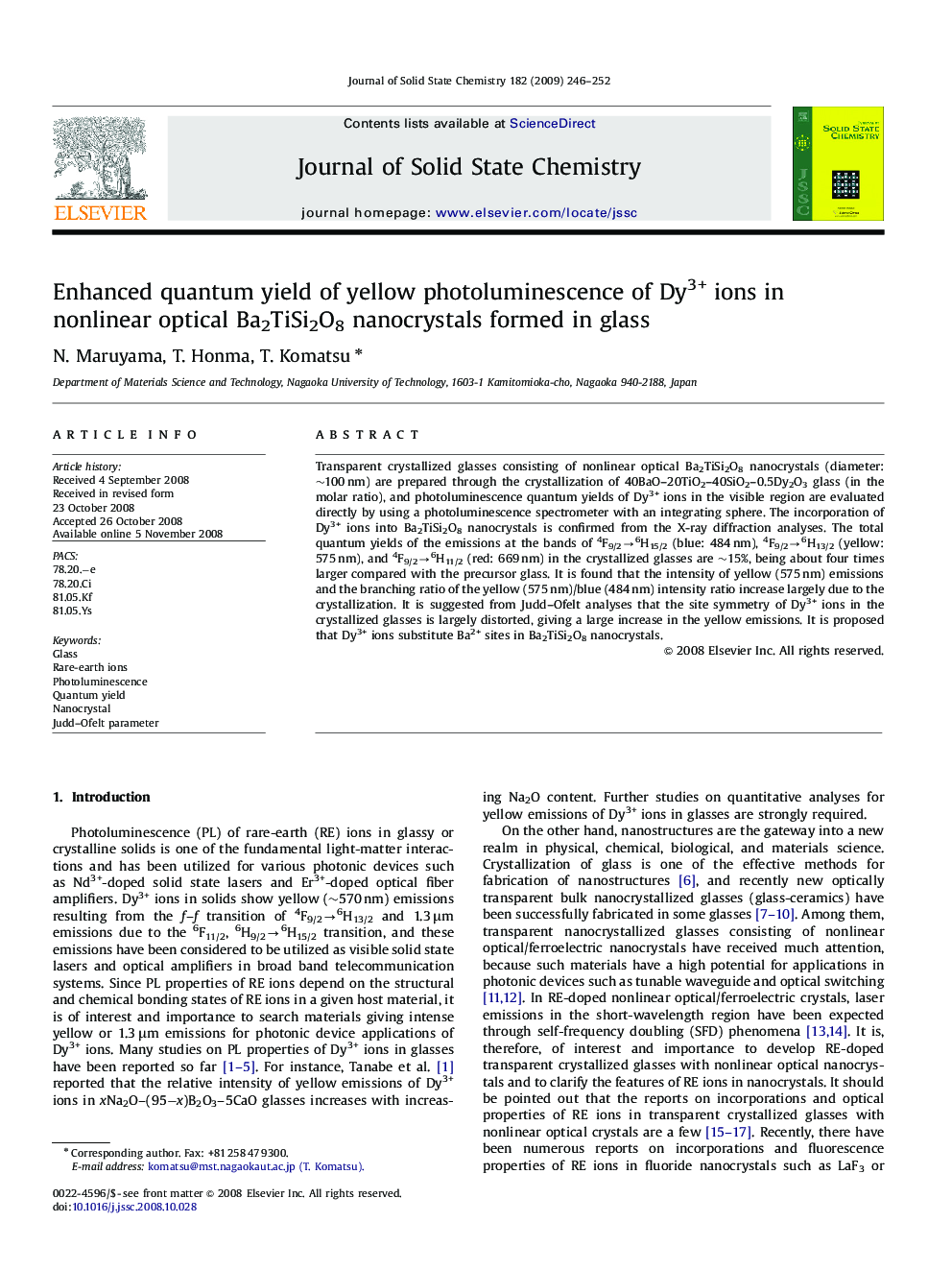| Article ID | Journal | Published Year | Pages | File Type |
|---|---|---|---|---|
| 1329571 | Journal of Solid State Chemistry | 2009 | 7 Pages |
Transparent crystallized glasses consisting of nonlinear optical Ba2TiSi2O8 nanocrystals (diameter: ∼100 nm) are prepared through the crystallization of 40BaO–20TiO2–40SiO2–0.5Dy2O3 glass (in the molar ratio), and photoluminescence quantum yields of Dy3+ ions in the visible region are evaluated directly by using a photoluminescence spectrometer with an integrating sphere. The incorporation of Dy3+ ions into Ba2TiSi2O8 nanocrystals is confirmed from the X-ray diffraction analyses. The total quantum yields of the emissions at the bands of 4F9/2→6H15/2 (blue: 484 nm), 4F9/2→6H13/2 (yellow: 575 nm), and 4F9/2→6H11/2 (red: 669 nm) in the crystallized glasses are ∼15%, being about four times larger compared with the precursor glass. It is found that the intensity of yellow (575 nm) emissions and the branching ratio of the yellow (575 nm)/blue (484 nm) intensity ratio increase largely due to the crystallization. It is suggested from Judd–Ofelt analyses that the site symmetry of Dy3+ ions in the crystallized glasses is largely distorted, giving a large increase in the yellow emissions. It is proposed that Dy3+ ions substitute Ba2+ sites in Ba2TiSi2O8 nanocrystals.
Grapical abstractThis figure shows the photoluminescence spectra of Dy3+ ions in the range of 450–700 nm obtained in the quantum field measurements for the precursor BTS and crystallized (at 770 and 790 °C, for 30 min) glasses. The wavelength of the excitation light was 352 nm. By incorporating into Ba2TiSi2O8 nanocrystals, the emission intensity of the yellow band of Dy3+ ions is largely enhanced. This would give an impact in the science and technology of photoluminescence materials.Figure optionsDownload full-size imageDownload as PowerPoint slide
